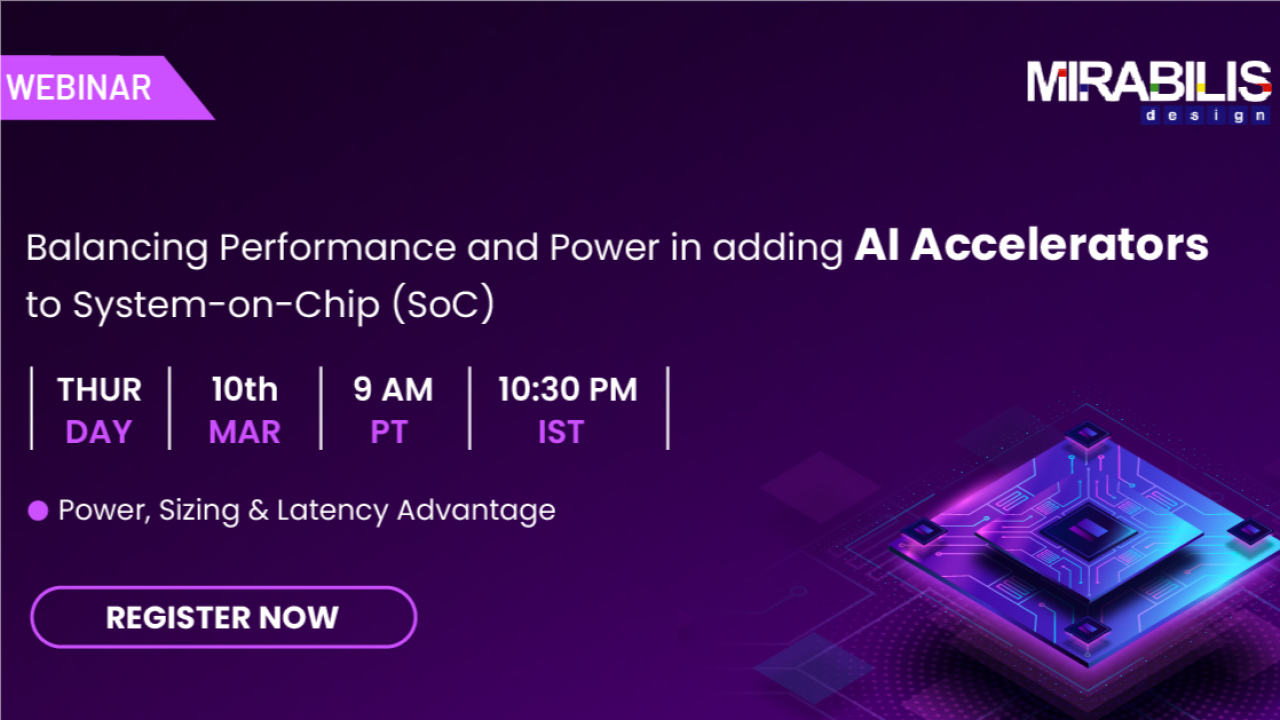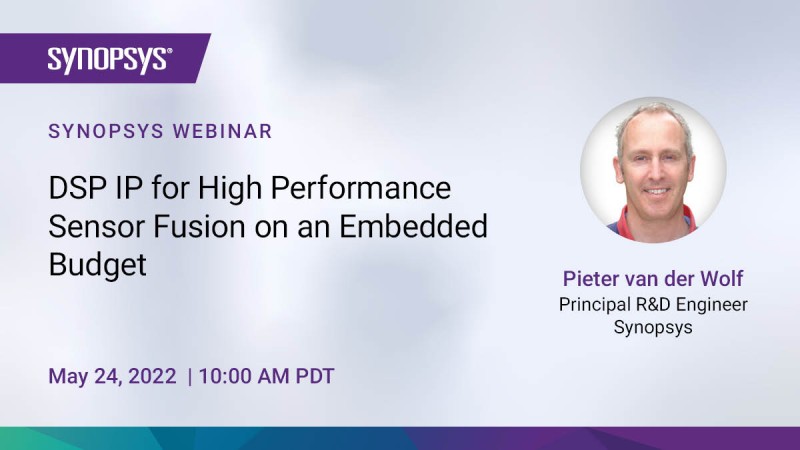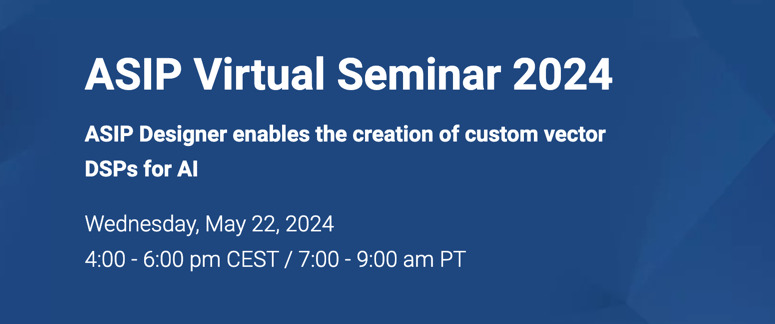DSP
-
-

Balancing Performance and Power in adding AI Accelerators to System-on-Chip (SoC)
• Do you need to estimate the power advantage of implementing an AI algorithm on an accelerator? • Do you need to size the AI accelerator for existing and future AI requirements? • Would it be beneficial if you knew the latency advantage between ARM, RISC, DSP and Accelerator in deploying AI tasks? This webinar… Balancing Performance and Power in adding AI Accelerators to System-on-Chip (SoC)
-
-

DSP IP for High Performance Sensor Fusion on an Embedded Budget
The growing use of a variety of sensors in edge devices – from wearables to virtual assistants to automotive radar/LiDAR – requires SoCs to have an optimal balance of DSP performance and low power/area. In addition, SoC developers must be able to easily scale their hardware architectures to handle a varying number of data streams… DSP IP for High Performance Sensor Fusion on an Embedded Budget
-
-

Formal Validation of a Datapath Pipelined Design with VC Formal
Finite Impulse Response (FIR) filters are widely used in communication, consumer electronics, and many other digital signal process (DSP) applications. A FIR filter includes a complex pipelined datapath based on arithmetic functions such as multipliers with its output at any given time depending on the previous state. Exhaustive verification of an FIR filter is important… Formal Validation of a Datapath Pipelined Design with VC Formal
-
-

Accelerating AI Applications Using Custom RISC-V based SIMD/VLIW DSPs
The revolution in AI triggers an increased awareness for application-specific instruction-set processors (ASIPs). These processors implement a specialized instruction-set architecture (ISA) tailored to the AI application domain, often starting from a baseline such as the RISC-V ISA. ASIPs can replace traditional fixed-function hardware accelerators, thereby introducing software-programmability in the AI acceleration domain, and thus more… Accelerating AI Applications Using Custom RISC-V based SIMD/VLIW DSPs
-
-

Synopsys Processor IP Summit 2024: RISC-V, DSP and NPU IP for Your Diverse SoC Processing Needs
Santa Clara Marriott 2700 Mission College Blvd, Santa Clara, CA, United StatesAs electronic systems continue to become more complex and integrate greater functionality, SoC developers are faced with the challenge of developing more powerful, yet more energy-efficient devices. The processors used in these applications must be efficient to deliver high levels of performance within limited power and silicon area budgets. Why Attend? Join us for… Synopsys Processor IP Summit 2024: RISC-V, DSP and NPU IP for Your Diverse SoC Processing Needs